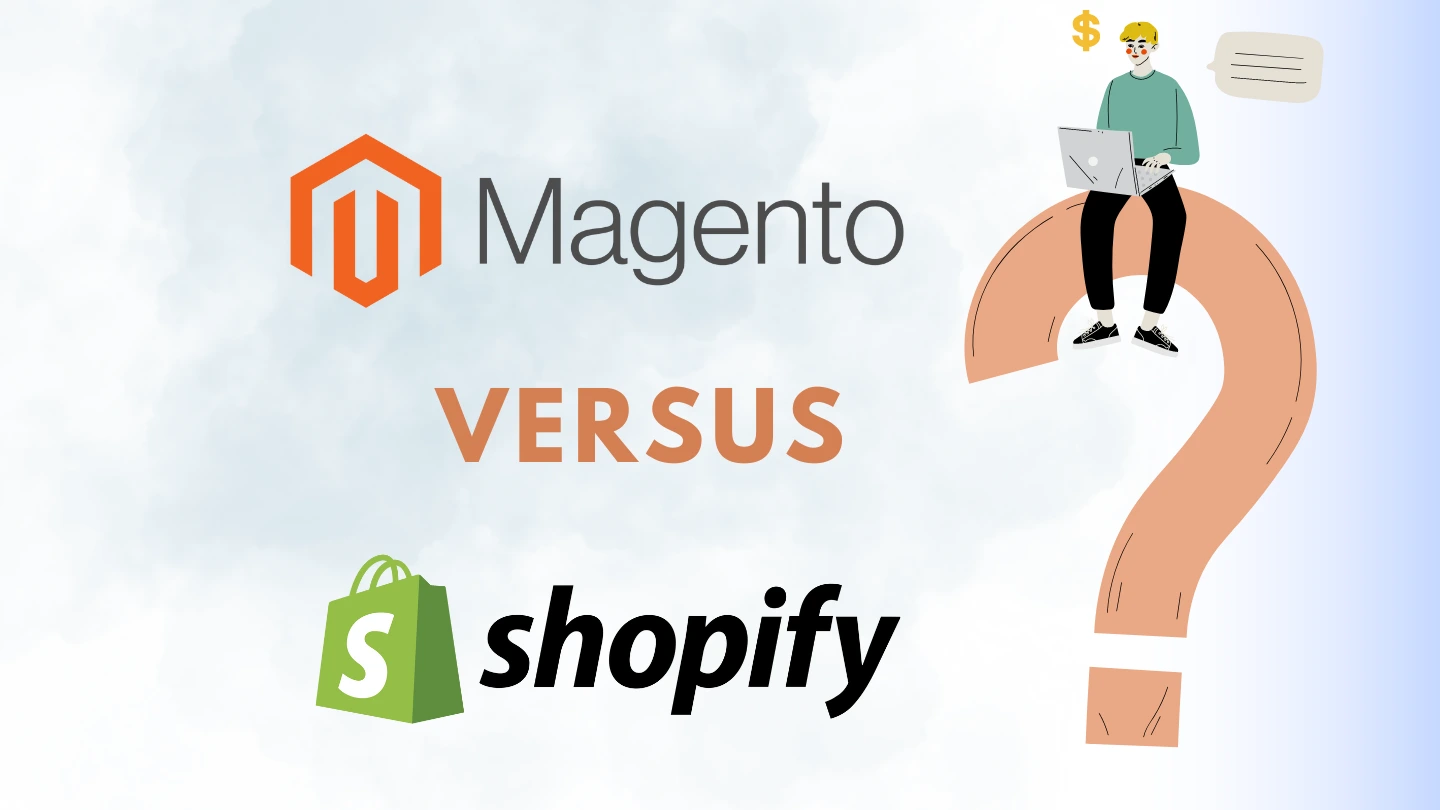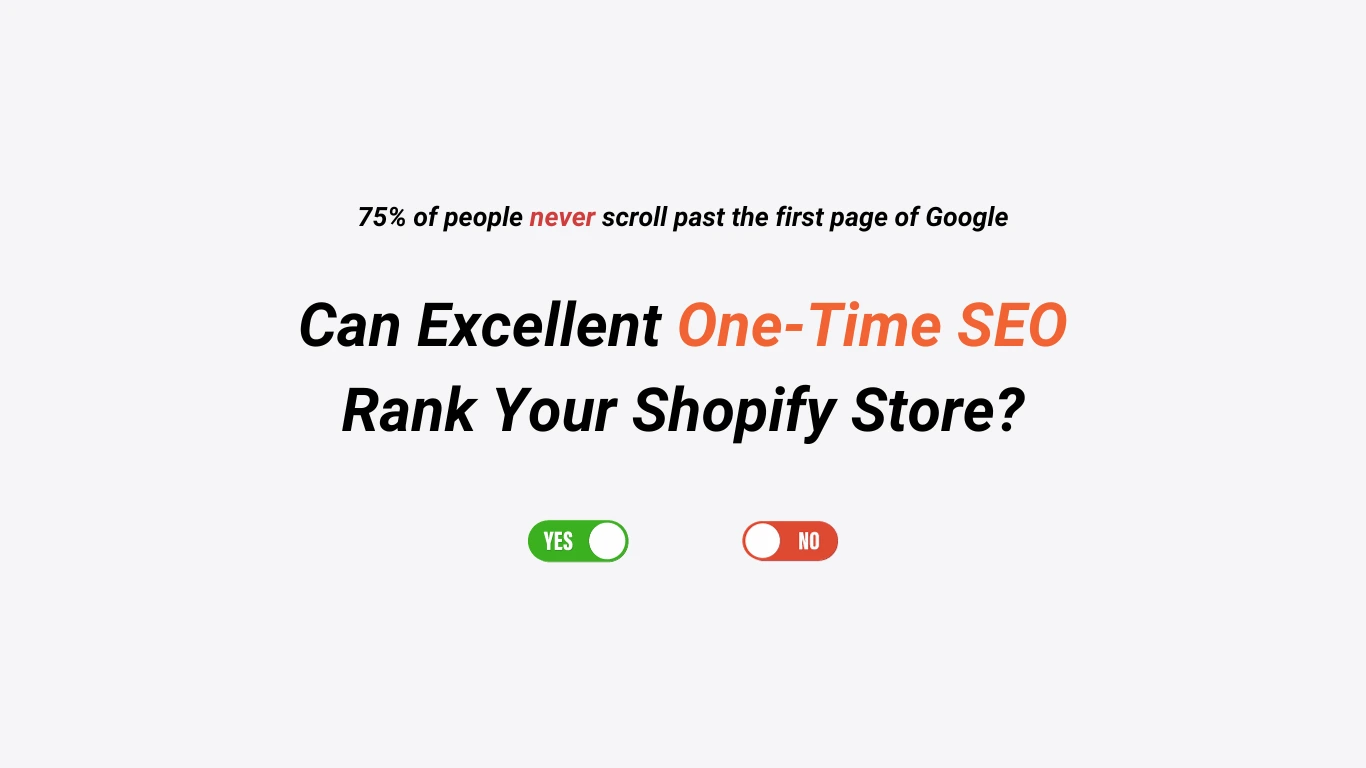Conducting a thorough evaluation is crucial when it comes to choosing between Magento and Shopify. This article brings you just that. An elaborated Magento vs Shopify Comparison.
These two popular e-commerce platforms are on the list of every online seller. So take the time to consider the advantages and disadvantages of each option and choose the one that aligns with your objectives and aspirations.
Check out our previous comparative guide Etsy Store vs Shopify if you haven’t already.
Now let’s get right into Magento vs Shopify Comparison.
Shopify vs Magento Market Share
As of 2023, Shopify holds a bold market share of 19.6% among all ecommerce platforms.
Second comes Magento, with a 7.9% market share. That is quite impressive on its own. Both of these platforms offer incredible features.
While a platform might be good for one business, it may not work for another. Accessing each platform’s features and capabilities carefully determines which one is the best fit for your online business requirements.
Magento vs Shopify Comparison: Main Differences
Shopify is more suitable for beginners as it offers a simple user interface. Magento is packed with features and is more suitable for advanced web developers. Shopify vs Magento market share speaks volumes.
Shopify has a comprehensive eCommerce website builder. It offers a Shopify App Store for extending the functionality of any storefront. It also offers great customer support. Shopify is easy to use, and there are tons of beautiful responsive store themes to choose from.
Coming back to Magento, It is an open-source, self-hosted, and more flexible and scalable than Shopify. It offers more flexibility and customization options but requires more technical knowledge to set up and maintain.
Now, Magento vs Shopify Comparison is just one aspect. The suitability and the choice between Shopify and Magento depends on the following:
- The specific needs of the business
- The level of technical expertise
- The budget of the business
Shopify and Magento are two popular e-commerce platforms with some key differences.
Here are the main differences between the two platforms:
#1: Magento vs Shopify Comparison for Ease of Use
Shopify is easier to use than Magento. It offers sellers a simple user interface suitable for beginners as well as enterprise businesses.
On the other hand, Magento is more flexible than Shopify. The platform enables users to customize their store with code, but it is much trickier to use overall. Not all sellers are technically sound when it comes to coding, technical SEO, sitemaps, and more. Even though it offers the best coding flexibility, Magento may not be suitable for most businesses.
#2: Comparing Pricing Plans!
Magento is self-hosted, and users need to pay for hosting separately.
Here is a Magento vs Shopify comparison on the basis of their price plans for sellers.
| Magento Pricing Plans | |
| Plan Name | Price |
| Magento Open Source | Free |
| Magento Commerce | $22,000 Per Annum |
| Magento Commerce Cloud | Custom Prices for all Enterprise-Level Businesses |
On the other hand, Shopify is a hosted platform.
All hosting costs are included in the monthly plan.
The platform does not cost any extra fee from Shopify Store Owners.
| Shopify Pricing Plans | |
| Plan Name | Plan Price |
| Shopify Starter | $29 per month |
| Basic Shopify | $39 per month |
| Shopify | $79 per month |
| Advanced Shopify | $299 per month |
| Shopify Plus | Quote-based |
#3: Store Functionalities
Both platforms offer a wide range of features and functionality that are enough to build an online store. Magento is packed with features and is more suitable for advanced developers. Shopify has a comprehensive eCommerce builder, a great app store for extending the functionality of the website, and pretty good customer support.
#4: Store Performance
Magento is more flexible and scalable than Shopify, making it a better option for enterprises with large product catalogs. Shopify is more suitable for small-scale businesses selling limited products.
#5: Integration Options
Both platforms offer integration with third-party apps and services.
Shopify provides a first-party POS system, while Magento offers a third-party POS via their extensions.
#6: Customer Support
Shopify offers online customer support for each of its pricing plans. They have a team of support members called Shopify Gurus. They have expertise in different fields, providing great customer service. Tons of users list it as one of the brand’s benefits. Shopify helps customers to get answers fast, correctly, and helpful– from both a developer’s and store owner’s perspective.
On the other hand, there aren’t many mentions of customer support in the search results for Magento. Their customer support is provided by third-party firms that specialize in Magento expertise. So clearly, Shopify scores another win here.
#7: Customization Options
Shopify offers tons of beautiful responsive store themes to choose from, both free and premium. On the other hand, Magento offers fewer free themes than Shopify, but it enables users to customize their store however they like with code. Thus, store owners have a better chance of customizing their stores exactly how they want on Magento. The choice between Shopify and Magento depends on the specific needs of the business, the level of technical expertise, and the budget.
#8: Additional Fees
There may be additional fees for accessing customer support on Shopify or Magento. Shopify charges monthly subscription fees, which include access to their storefront plus other features like analytics and customer support. Businesses can also opt for an annual plan. Shopify doesn’t charge any setup fees besides the plan. They also offer a 14-day free trial for users to evaluate all of their features. If users want to use another payment provider besides Shopify Payments, there will be additional transaction fees.
Here is the fee for all the plans:
- 2% for the Basic plan
- 1% for the Shopify plan
- 0.5% for the Advanced plan
Magento is free to use. There are no built-in transaction fees either. However, there may be additional payment processing fees or costs to integrate third-party apps. When users add a payment provider, transaction fees may be added. For example, Stripe charges 2.9% and £0.20 for transactions.
Magento to Shopify Migration Checklist
Before migrating from Magento to Shopify, it is crucial to use 301 redirects to avoid “Page Not Found” errors. You might also want to replace Magento-specific apps with Shopify alternatives. But the most important of them all is customer data. Migrate all customer data (excluding passwords) safely.
In any case, you do not want the data to get lost or tampered with.
Achieve Your Maximum E-Business Potential
We ensure a smooth and secure migration for your store. If you are feeling courageous, then you can also go with automated or manual migration as well. Here’s our checklist to help you with the migration process.
✅Back up your Magento store data.
✅Set up your Shopify store.
✅Choose a migration method.
✅Start the migration process.
✅Check your Shopify store after migration.
✅Set up 301 redirects for SEO rankings.
✅Troubleshoot any issues.
Magento vs Shopify Comparison: Key Takeaways
While Magento vs Shopify comparison tells us that the latter is chosen by most businesses in the United States. On the other hand, Magento offers better B2B Support compared to Shopify. So B2B enterprises may be better off with Magento Website. Additionally, Magento offers some of the greatest features like customization options, and advanced features.
It is also worth noting that Shopify offers the biggest advantage to sellers—
- Ease of Use and User-Friendly Interface
- Built-in SEO Features and Marketing Tools
Businesses Owners come from different backgrounds and have a varied understanding of websites. Shopify gets it that not all entrepreneurs are proficient in Website Customization, Web Design, On-Page SEO, Off-Page SEO, Discount Code Management, Setting up Payment Gateways and so much more. Shopify SEO Consultant helps businesses make data-driven decisions. Our Magento vs Shopify Comparison shows what all you can get with a Shopify Website.
So which one do you think is best suited for your store?
If you liked this comparison then we have something more for you.
We conducted a Shopify Store Audit on SPANX, one of the biggest apparel stores in the United States. Our article includes key SEO metrics that help in building conversion-boosting Shopify Storefront. You might want to give that a quick read as well.











